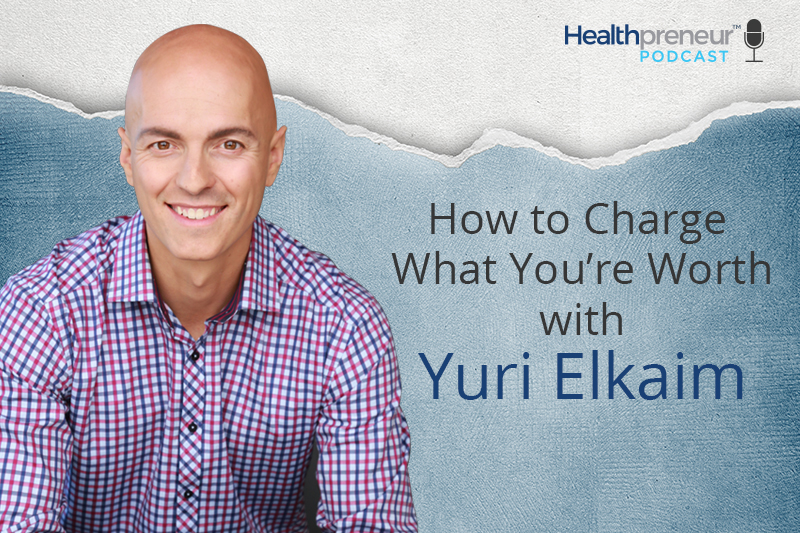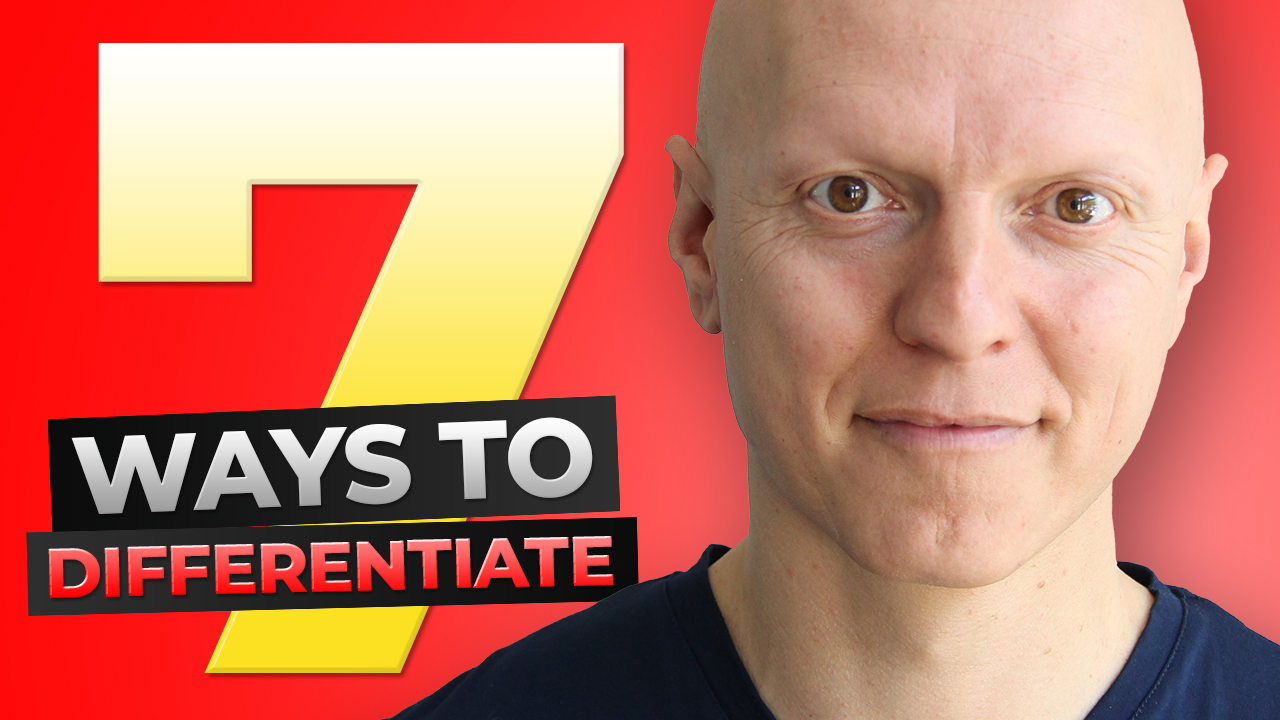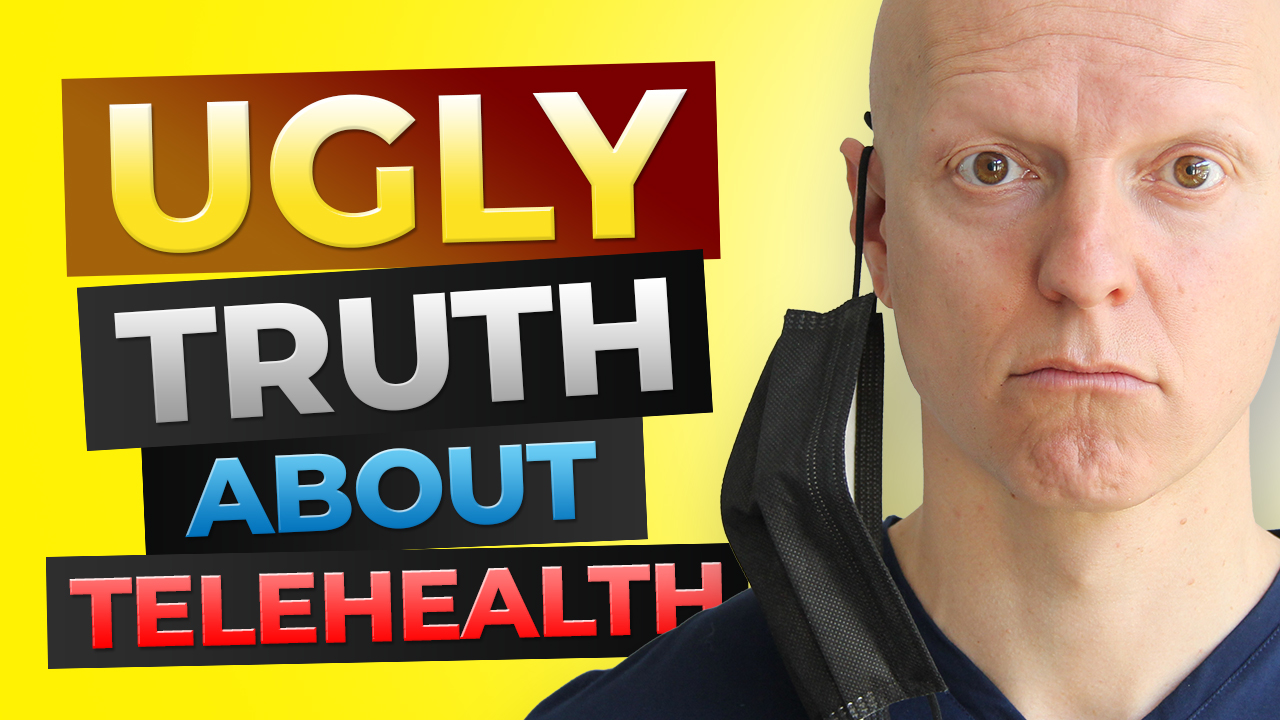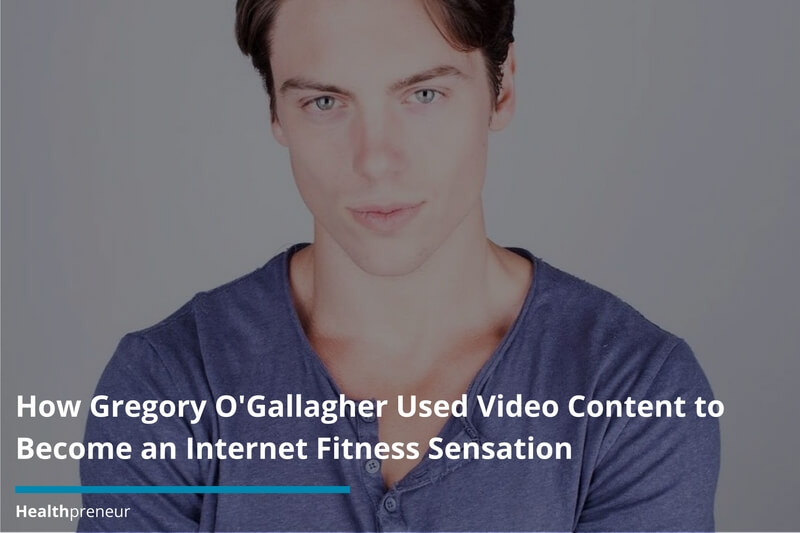How to Charge What You’re Worth

In this solo episode, I tackle the tough issue of how to charge what you’re really worth. I know this is important because I have a lot of clients that struggle with it. Most of what I talk about today is aimed at coaching, but it can apply to you even if you’re selling a product or information rather than coaching services.
Think about this: A Bugatti or a Rolls Royce is always way more expensive than other cars, right? This is not just because they are good-quality items, but because there is always a segment of the market that wants the best. They want the best experience, the best results, more certainty, more personalized attention. So if you have an awesome protein powder that everyone else is charging $40 for—charge $80. Why? When you charge at a premium, customers assume what you’re offering is premium! They assume it’s the best. And it should be—you have to offer a very high-quality product.
If you want to impact people, you can either go the route of magnitude, or the route of impact. Either sell cheaply to thousands, or sell to far fewer people for a lot more money. In the health and fitness space, most of us love working with people and want to change their lives. It’s so much more rewarding to enroll one person in your coaching program for $5,000 than to sell a book for $10—to 500 people.
In this episode I discuss:
3:00 – 7:00 – Do your best to not to compare yourself to anybody else.
7:00 – 15:00 – Know the value of what you’re offering.
15:00 – 21:00 – Raise your standards and think bigger.
21:00 – 24:00 – Imagine your life with fewer clients paying you more!
Transcription
Wouldn’t it be great if you could charge what you’re really, really worth? Well, that’s what we’re going to talk about in today’s episode of the Healthpreneur Podcast, solo round edition with yours truly, Yuri Elkaim.
I think this is a really important topic because we speak with a lot of clients who struggle with this, right? They have this great program and I’m going to talk specifically about coaching because when it comes to selling information or even physical products or supplements, you have a little bit less wiggle room to price appropriately.
Now, let me just quickly say, if you’re offering supplements or information, I would still recommend you offer premium prices, so that you standout from the competition. For instance, if you’re offering some type of powder that everyone else is charging 40 bucks for, charge double, right? Why not? Why not charge double?
What that’s going to do is that’s just going to immediately make the assumption for a lot of people that yours is better, just like Rolls Royce is way more expensive than most other cars, right? Just like there are the Bugatti or the different super cars that are a million dollars plus.
For most people, that’s insane, but those cars sell out before they’re even built. There’s always a segment in the market that wants the best. By pricing at a higher level, assuming your stuff is great, which it should be, that we shouldn’t even have to talk about that, right? I’m not talking about ever putting stuff out there that’s subpar. You have to put stuff out there that’s the best and you need to back it up with that type of pricing, okay? So if you do sell a product, even though this discussion is a little bit different, I think you’ll still pick up on a couple of things that will help you with your pricing. All right.
Do your best to not to compare yourself to anybody else
So let’s talk about this. You’re a coach in this conversation. We’re talking specifically to people who are offering coaching as a service. Whether that’s one on one or a group. I have a preference for group because I just think it’s better for everyone. But here’s the thing. So you are offering some type of coaching program that is going to help people lose weight, overcome emotional eating, prevent cancer. Whatever it is, right?
The first thing we need to do is not to compare yourself to anybody else. What you are going to find is you’re going to have a solution, you’ve got a solution a program that is going to help people go from oh my god, I can’t get out of bed, my back is in so much pain to I can pick up my kids, I can go play volleyball, I can swing a golf club, no problem.
That’s a huge transformation for those people. You’re charging three, $4000 for that to work with people over eight weeks, let’s say. And the tendency is going be like oh my god there’s a book out there that shows people how to reduce back pain for 20 bucks. Why would people pay me $4000 if they can buy something for $20?
So you have to remember that in any given market, there’s always going to be people who want the best. The best experience, the best results, more certainty, more hand holding, more personalized attention. And that’s what a higher priced offer is going to allow you to provide.
So don’t compare yourself to anybody else because number one, they’re probably not providing what you’re providing. Second, you have to ask yourself, “Okay, if I’m gonna bring this to market, how can I make this 10 times better than what already exists,” which would then justify a higher price because you can’t just charge a higher price for he sake of charging a higher price. It really has to be good.
Know the value of what you’re offering
If it’s a new or novel idea, then that’s even better. For the most part, most of us are in a pretty competitive space. You’re not the first person to help people lose weight, you’re not the first person to help people manage their stress. So yours has to be set up in a way where it is much better than what’s out there. It can help to do a little bit of market research.
You don’t have to go crazy about this, but just have an idea of what others are offering. But even if you don’t, at the end of the day if you know what you’re offering is gonna make a huge difference in someone’s life, who cares what everyone else is doing. Because competition becomes irrelevant for a couple reasons.
Number one, your message is probably different. You have a different proprietary process as we call it that might help someone go from where they are to where they want to be. No one else has your proprietary process. As a result of that, you have your own little bubble.
Second is no one else is you. You are the only you. Because of that, you’re now a category of one. When you take your unique individuality with your unique approach to solving a problem, there really is no competition. Now people might think, “Well, there’s other back pain solutions out there,” and there are. But who cares. You only want the select number of people who are saying, “Yes, I resonate with you. I resonate with your message. I resonate with your approach. Let’s do this. I’m gonna invest $4000 because I believe that this is the most certain path to get me the results I’m looking for.” So don’t compare yourself to other people.
Now here’s the thing. The second thing I want to share with you is that you have to realize the value of what you’re offering. What that means is … Again, we help people in the health and fitness space. A lot of times they think to themselves, “Well, I can’t charge X number of dollars because there’s no ROI attached to that.” It’s easy to sell business related stuff because you can charge 5000 and make 20,000 in return. That’s easier. Not really. Let me tell you why. It’s your job as the coach to be able to transmit this information or this perspective to your potential clients.
So if you’ve been dealing with back pain for a number of years and you can’t get into bed, you can’t play with your kids, how much is that costing you? If you were to put a number on that, how much is that costing you? And if you can’t come up with an answer, let’s put it a different way. How much would it be worth to you if you could jump out of bed, if you could throw your kids around, if you could swing that golf club again, if you could get back into your garden and do all the things that you love to do, how much would that be worth to you? Seriously. How much would you be willing to invest to make that a reality? And just wait for the answer. If someone comes back to you and says 100 bucks, I would just be like, “Dude, you’re crazy. That’s not going to happen.
See what most people don’t realize is that it’s the intangibles in life that are the most valuable. Love, relationships, happiness, health. How do you put a price tag on that stuff? It’s all gonna be relative to the individual. The more pain somebody has, the higher the value they’re going to put on that. And that’s why it’s important to be able to offer something that solves a big pain or problem for someone. The right people would be like, “You know what? I’ve been suffering with this for too long.” And let’s say they came back, what you’ll find a lot of times, they’ll say that’s priceless. That’s priceless. And I would challenge you to ask a little bit deeper.
Okay, I understand this price is because it is. But if you were to put a dollar amount on that, what would that be? If you went to a doctor and the doctor said, “Here’s a pill that could take this back pain away forever, how much would you pay for that pill?” Try to get a numeric … Like an actual number out of them because a lot of times it’s gonna be a lot more than what you’re charging. And you have to realize the true value of what you’re offering is infinitely more valuable than any other business related service that can help you market better, that can help you … Whatever it is.
And I say that even with our workshop, or my mastermind. Even though they’re super badass and valuable and we help our clients, what you do as a health, fitness, or wellness expert is infinitely more valuable than what I do because I really believe that transforming someone’s health is the ultimate. There’s nothing more powerful. Relationships, definitely up there. Love, self- love. All that good stuff is up there. But nothing trumps health. And you have to really believe that. And if you’re helping someone manage their stress, doesn’t seem like there’s a big pain point there. You have to figure out a way to make that pain very real in that person’s life. Or that person has to realize there’s a big block that’s holding them back that you can solve. So you have to come to the realization that what you’re solving for people is a major crisis. It’s not just like a nice to have. This is a must have. And as a result of that, you can charge a premium price.
If we were in a world where people truly valued and paid for that, what would this mean to them. Someone who has been diagnosed with type two diabetes, they’ve been suffering for 10 years. They’ve been on medications and spending tens of thousands of dollars on medications and doctor visits. Do you think that a $37 ebook is worth while? How do you say a $37 ebook represents the value that that can mean to that person? And I say that because we actually have a $37 program. It’s called Defeating Diabetes.
And the reason we don’t do a higher level coaching with that is because I don’t want to. Right? But for the most part, we’re speaking here to people who love coaching and working with people at a deep level. If I really want to coach people with type two diabetes, that $37 program would be $5000 minimum. Not everyone’s gonna be able to pay it because a lot of those diabetics are on food stamps, or retirement, whatever it is. I don’t care. But I’m gonna get to the point where I know that if someone buys the $37 program, the likelihood of them doing the work is slim to none. Why? Because they don’t have enough skin in the game. So am I doing them a disservice by charging way too little? Yes.
So you have to recognize that by giving people a free lead magnet or a $10 ebook, it’s a disservice to them. Yes, you’ll get higher conversions. You’ll get more people enrolled, whatever. At $10. But are they ever gonna crack open the cover? Are they ever gonna open the PDF? The vast majority of times, they don’t even download what they bought. And there are obviously gonna be a percentage of people who do put in some work and who do follow it and get great results. That’s awesome. But it’s such a small percentage. I would rather work with fewer people, go deeper with them, transform their life 100% of the time than spray some program out to thousands of people hoping that a handful will succeed.
And I say that because that’s what I’ve done for 13 years. I’ve done both. We have a lot of programs that are five to a couple hundred dollars and some people get great results with those. But when I look at the ratio of the people who buy or download our stuff versus the transformations that happen, it’s very, very slim. And it’s not to say that our programs don’t work because they do. And here’s an even better thing. If you’ve got a program that works like gang busters, like a book for instance, turn it into a freaking coaching program. Because the same process and protocol you’ve laid out in your book becomes the framework for your coaching program. And even though let’s say 1000 people buy the book at 20 bucks, I would say maybe five to 10 of those people, maybe more, will be willing to work with you at a higher level for anywhere from three, four, five, $6000. Because there will always be people who want more access, more personalized attention, better results. Because they know that if they pay, they’re gonna pay attention. That if they invest, they’re gonna show up and they’re gonna get better results. So that’s the second thing is realize the value of what you’re offering.
A buddy of mine, Eric, who I play tennis with. He’s also in our space. He’s got a great website. Precisionmovement.coach. Awesome stuff. And I’ve used one of his programs. I’ve used a few of his programs for my shoulders. From tennis and so fourth. He’s got a program called Scap Control. We were talking about this yesterday when we were playing. I’m like, “Dude, this is an amazing program.” It’s less than 50 bucks, okay? And I’m like, “You can take this program and turn it into a several thousand dollar coaching program that is not going to appeal to everyone. But it’s going to appeal to people like me who once and for all want to get rid of their shoulder pain so they can perform at the highest level.” You have to kind of wrap your head around that. And it’s not to say that everyone has to do this because some people don’t want to coach. They just want to put out information and not deal with people. And that’s fine. But if you really enjoy coaching people and if you want a lot more profit and impact in your business, you have to be charging more.
Raise your standards and think bigger
Number three is you have to raise your standards. You have to raise your standards not just for what you’re worth, but for your life in general. Your life in general. Because there’s two ways of doing things in the world of business. If you want to impact a lot of people, you can go the magnitude route or you can go the impact route.
You can reach a lot of people, make a lot of money by selling something for a little bit but to a lot of people. For a $10 product, you have to sell millions upon millions upon millions of copies. You’re on QVC, shopping channel, that type of thing. The second way is you work with fewer people, but you charge a lot more. That’s where coaching comes in. And there’s no right or wrong. One isn’t better or worse than the other. It’s a personal choice. But what I’ve recognized in the health and fitness space is that most of us love working with people.
So why would we put out information that is not going to serve our clients, is going lead to a business model that we feel less excited about because we spend most of our time optimizing, and setting up funnels, and writing sales copy to sell something for $10. But instead, we can take that same energy, put it into something up to 100 times more and impact people at a higher level. And when you do that … It’s so much more exciting when you can enroll one person for $5000 instead of getting one person to buy your book at $10.
Imagine your life with fewer clients paying you more!
If you want to buy a house or take a trip, how many $10 clients do you need to have buy your stuff to make $5000? You need 500 people buying a $10 product to make $5000. 500 people. How do we get 500 people to buy? Well, maybe you have a huge email list. And that’s awesome. But I’ve got a huge email list and trying to get 500 people to buy a $10 product is like pulling teeth sometimes.
So you have to recognize the pros and cons of either one of these approaches. Every time I expose myself to successful people in successful environments, I no longer am satisfied with lower levels of income. So for instance, we live in a beautiful home right now. And it’s a home that is worth several million dollars. And it’s great. It’s in the best location of Toronto, I think. And we love our home. We absolutely love it. But I think one of the things that’s cool about life is you’re able to do, be, and have whatever you want.
So I set out an intention a little while ago. I’m like, hey you know what? In the next five years, I would like to build our dream home. And I want to build it down the street overlooking the river. Just a slightly different location in our existing area. It doesn’t make sense financially to pay a land transfer tax, to blow up a house that would in and of itself be maybe three or $4 million and then build another house on top of that. But I thought to myself. I’m like hey, what if we built our own house? That would be six, seven, $8 million. And you might be thinking to yourself, “Dude, that is … I can’t even comprehend that kind of money,” or maybe, “That’s awesome. Good for you.” Whatever your belief is about that. The thing is … I’m not saying you have to put yourself in situations where you become financially in a very compromised position, but it’s just asking the questions.
It’s like, hey, what if. What would have to be true if we wanted to do that? What would the mortgage payment be on that? 20, $30,000 a month? Hey, that’s not that much. That’s fine. Right? For some people that’s way too much money. You’ve got to raise your standards. You have to raise your standards at what’s possible. Because all of a sudden if you build a five, six, $7 million home, all of a sudden the way you look at your business changes.
So one of the exercises I want to leave you with here is I want you to take out a sheet of paper. I want you to write down everything you want to be, do, have you have in your life. House, travel, whatever.
If I want to travel with my family four times a year for 10 to 14 days each time, that’s gonna be minimum $100,000. Minimum. So how do I make $100,000? Well, I could sell 500 million copies of a $1 product, for instance. Or I can enroll and serve and really transform the lives of a select group of people.
For me, that’s much more exciting. It’s always helpful when you know where you’re going because it gives you that kind of north star. And it doesn’t have to be about stuff. It doesn’t have to be about the house, or the cars, the travel. Whatever is meaningful to you. Write those down. Write down how much those would cost. And start to just live there. Live there. Because now you know okay, I have to be making this amount of money to reach these types of dreams.
All of a sudden what you think is possible in your business is kind of shattered. You kind of break through this glass ceiling. You start thinking differently. You start thinking bigger. And as a result of thinking bigger, your standards are raised. The way you price your programs hopefully becomes a reflection of that. Not because you want to greedily get more out of life … Which by the way, there’s nothing wrong with doing that. But when you think bigger, it forces you to think better and more strategically about what you’re offering. So you can make things better for your clients and you can charge more. So if I’m thinking with my workshop or with my mastermind, how can I double the price? And not to say double the price for doubling the price. It’s doubling the price … If the price were double, what would we have to offer to make our … The results our clients get even more certain, faster, less frustration. And this is a really good thinking exercise to go through.
So there we go. Okay. So I know we’ve covered a lot here. And I hope this has really inspired you to really rethink how you charge for what it is you offer.
So again we talked about don’t compare yourself to other people. There are trainers that are offering their online coaching for $197 a month. Three month minimum. Wow that’s terrific. Well, don’t do what they do unless you want to live in that world. I’ve spoken to trainers who have 50 clients a month at 200 bucks. Okay, that’s $10,000 a month, but they are grinding away. They don’t have time. They don’t have time for themselves. Because they’re doing one on one calls. 50 clients a month. What if you had 50 clients a month in a group coaching program at $5000 each? All of a sudden you got a $25,000 a month revenue coming in with a handful of hours a week giving those clients your coaching instead of one on one. You free up a lot more of your time. They get better results because they’re in a better coaching program. And these are the things you have to recognize is don’t compare yourself to other people unless you want the results that those other people have.
Number two is realize the value of what you’re offering is immense.
And three is raise your standards. Raise your standards, think bigger, okay?
So if you jive with this, if you want support in your business with this, if you want us to be able to help you with crafting an offer, building at a program that command premium prices and truly transform your clients, here’s what I want you to do right now.
As I’ve said before if you haven’t done so, watch our training, the 7-Figure Health Business Blueprint. It’s over at healthpreneurgroup.com/training.
Go through training. You’ll get a much better perspective of what we’re talking about. You’ll see our business model, you’ll see how we build this out. And if you wanted help, book a call with us after that, okay?
So that’s what I want you to do right now. Go to our 7-Figure Health Business Blueprint Training
Thank you so much for joining me once again. I hope you enjoyed this episode. And until Wednesday. Hope You have a great one. Continue to get out there, be great, do great, charge what you’re worth, and I’ll talk to you soon.
If you enjoyed this episode, head on over to iTunes and subscribe to Healthpreneur™ Podcast if you haven’t done so already.
While you’re there, leave a rating and review. It really helps us out to reach more people because that is what we’re here to do.
What You Missed
In our last episode, I had the pleasure of talking with Emily Lark, the creator and owner of Back to Life, the complete healthy back system, and owner of a yoga studio.
Emily hasn’t always been savvy about copywriting, marketing, and the online space. But what she did to master those things has made all the difference for her business.
Tune in to hear how Emily uses fear to propel herself forward in business and how she deals with the doubtful voice in her mind. Chances are that you’ll be able to take away some valuable nuggets of advice.
Related posts
November 11, 2016
How Gregory O’Gallagher Used Video Content to Become an Internet Fitness Sensation
Despite being only in his early…





